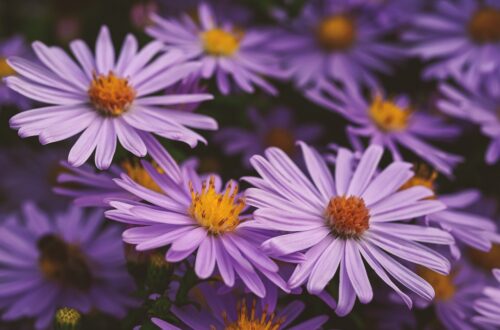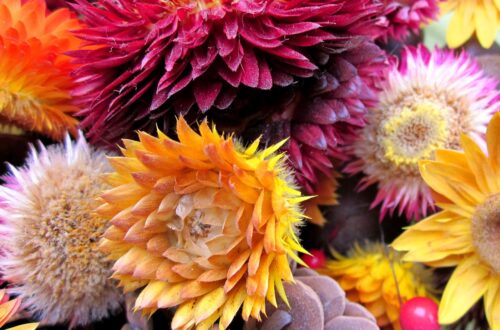How to Grow and Care for Swan River Daisies
Swan River daisies are the perfect choice for gardeners looking to add vibrant hues to their landscape. These delicate, daisy-like flowers, native to Australia, bloom in shades of blue, purple, pink, and white, creating a stunning visual display. Whether you’re a seasoned gardener or a beginner, growing Swan River daisies is a rewarding experience. With their easy care requirements and cheerful blossoms, they make an excellent addition to flower beds, borders, and containers. Ready to learn how to cultivate and care for these charming blooms?
| Category | Details |
|---|---|
| Common Name | Swan River Daisy |
| Botanical Name | Brachyscome iberidifolia |
| Family | Asteraceae (Daisy family) |
| Plant Type | Annual or perennial (in mild climates) |
| Mature Size | 6 to 12 inches tall, 6 to 18 inches wide |
| Sun Exposure | Full sun to partial shade |
| Soil Type | Well-draining, sandy or loamy soil |
| Soil pH | Slightly acidic to neutral (6.0 to 7.0) |
| Bloom Time | Late spring to early fall |
| Flower Color | Blue, purple, pink, white |
| Hardiness Zones | 9 to 11 (grown as an annual elsewhere) |
| Native Areas | Western Australia |
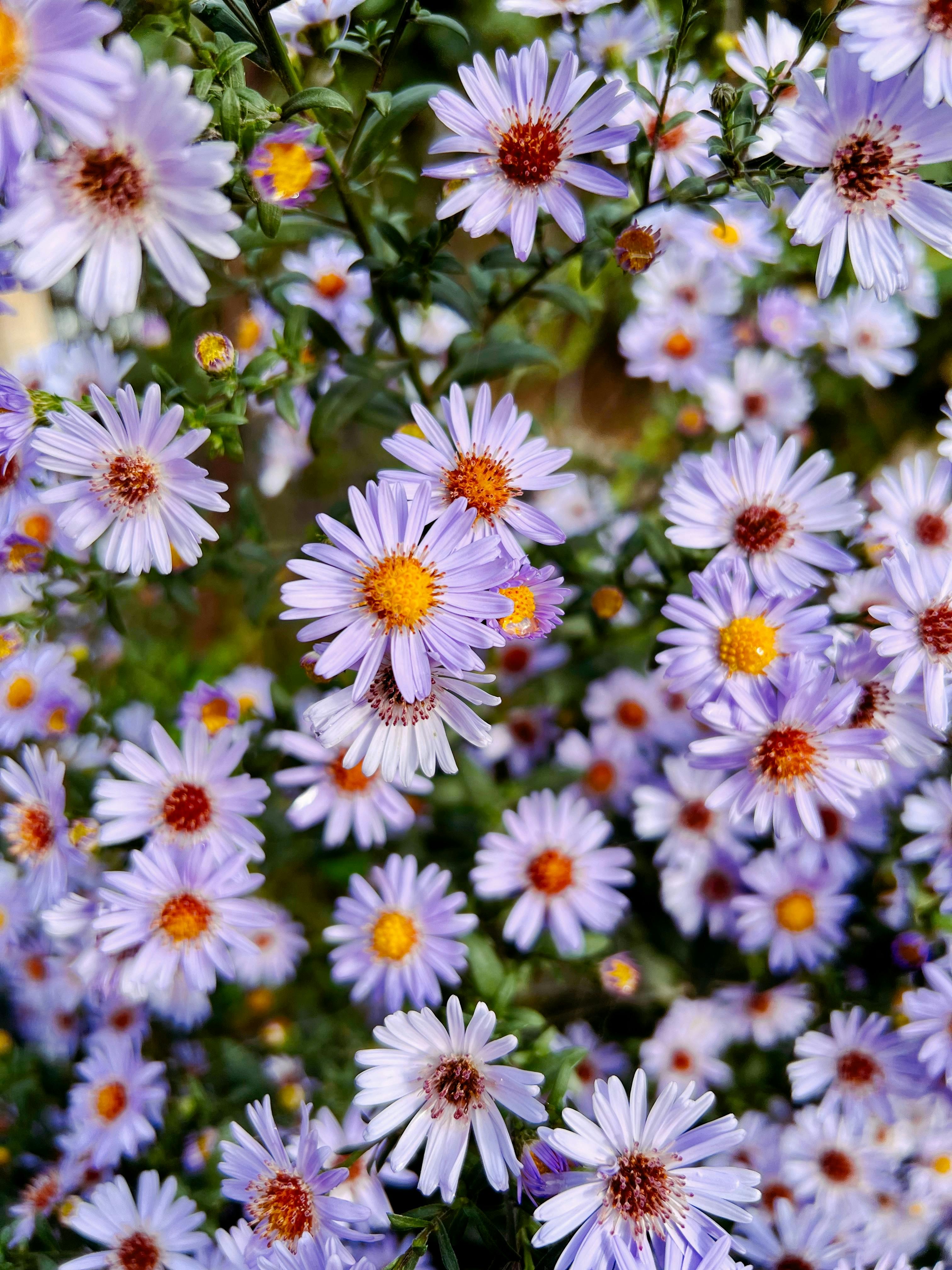
Choosing the Right Location for Swan River Daisies
Swan River daisies thrive in sunny locations. They need at least six hours of direct sunlight daily to produce abundant blooms. When selecting a spot in your garden, opt for a location with full sun to partial shade. While they can tolerate some shade, too much can reduce flowering.
These daisies are versatile and can grow in garden beds, borders, or containers. If you live in a region with scorching summers, providing some afternoon shade can prevent the flowers from wilting. Additionally, ensure the planting area has good air circulation, which helps keep the plants healthy and reduces the risk of disease.
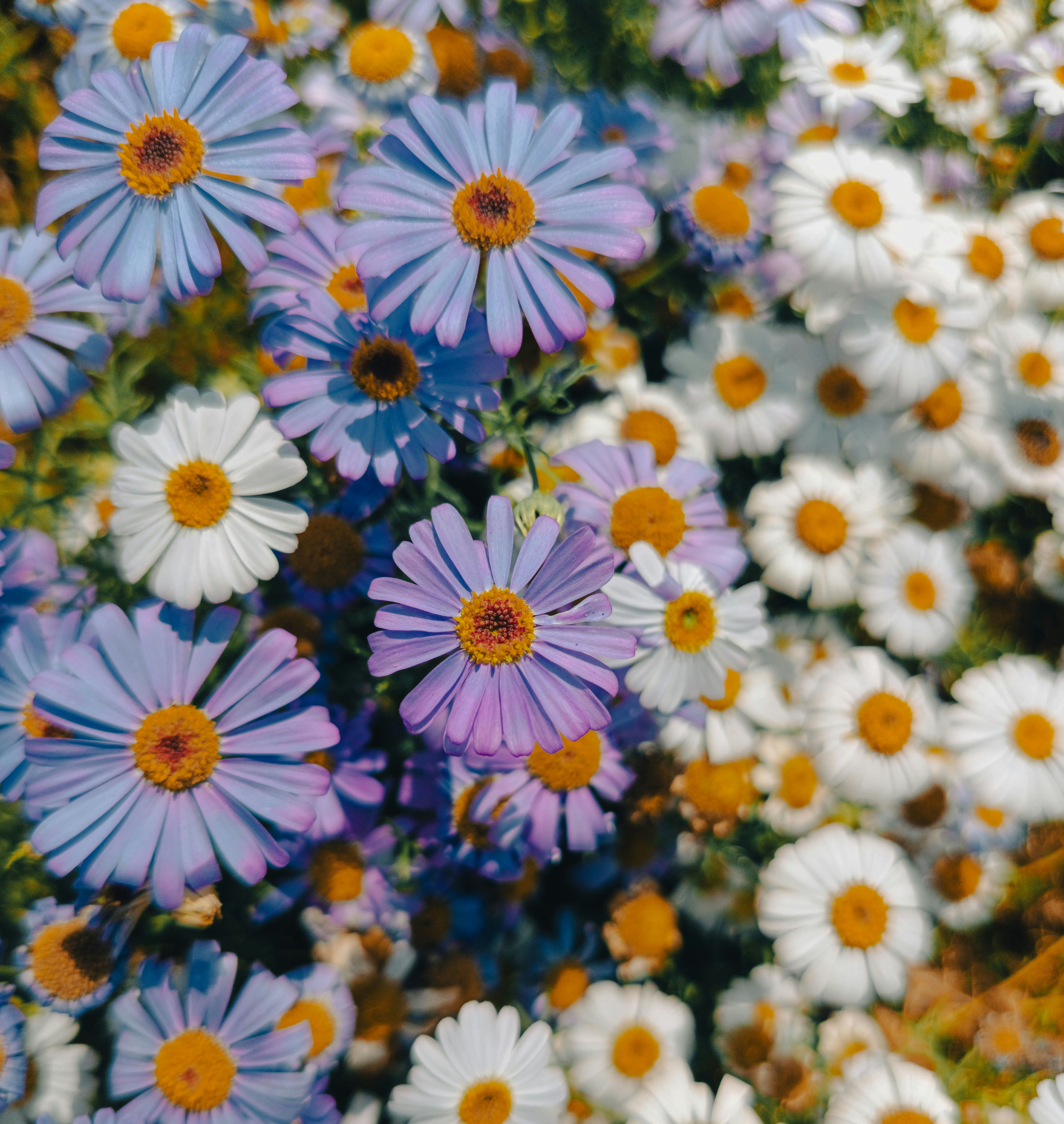
Soil Requirements for Healthy Growth
Swan River daisies aren’t too picky about soil, but they do best in well-draining soil that’s rich in organic matter. Sandy or loamy soil types are ideal as they provide the drainage these plants need to thrive. If your soil is heavy clay, consider amending it with compost or sand to improve its drainage capabilities.
A slightly acidic to neutral pH range of 6.0 to 7.0 is optimal for Swan River daisies. Testing your soil’s pH before planting can help ensure it falls within this range. If the soil is too alkaline, adding organic matter or sulfur can help lower the pH.
In containers, use a high-quality potting mix that provides good drainage. You can also mix in some perlite or sand to enhance drainage.
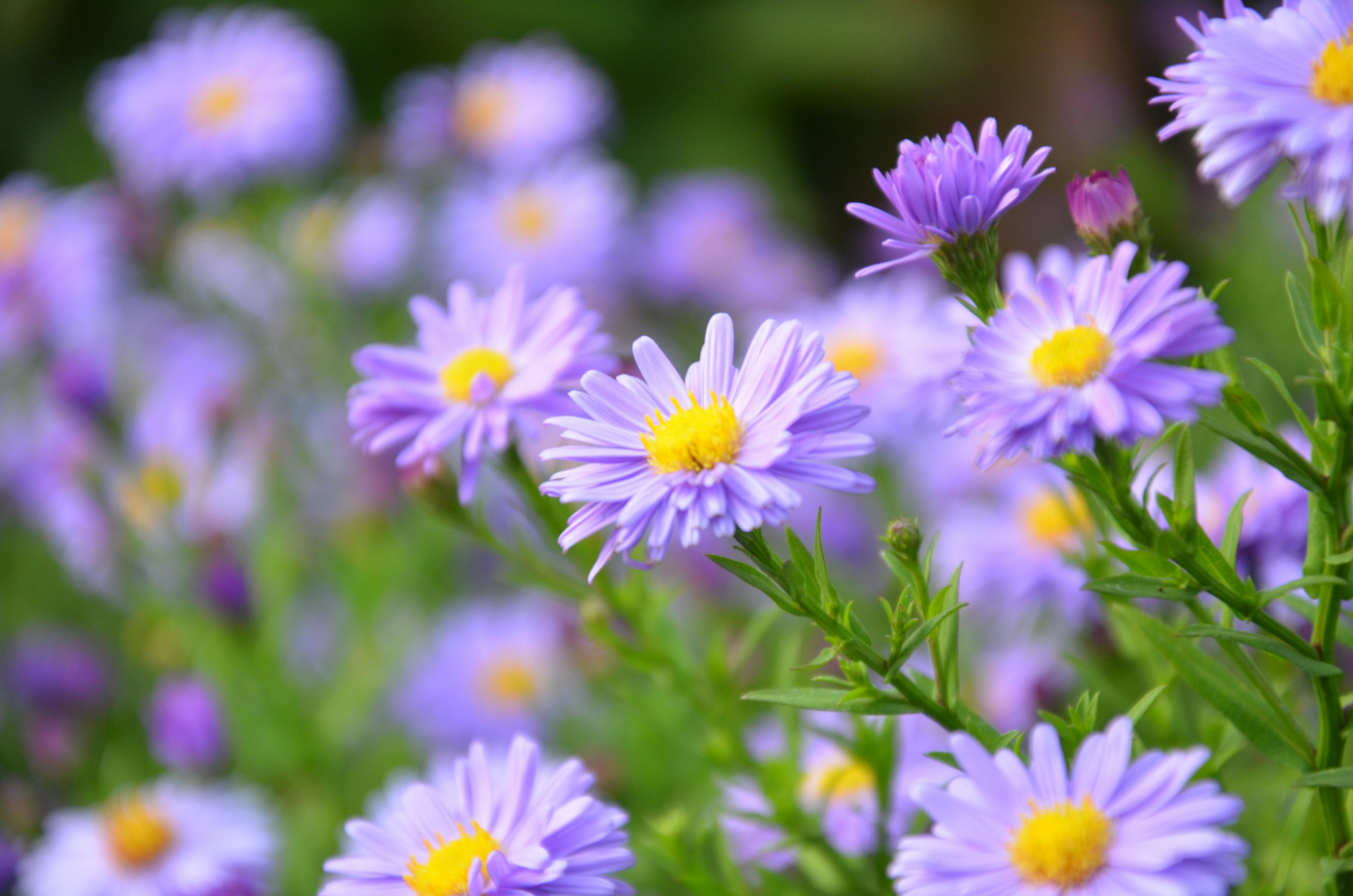
Watering Swan River Daisies: Finding the Right Balance
Swan River daisies need regular watering to establish themselves, especially during the first few weeks after planting. Once established, they are relatively drought-tolerant, but they still appreciate consistent moisture during the growing season.
Water deeply but infrequently, allowing the top inch of soil to dry out between waterings. Overwatering can lead to root rot, so it’s essential to avoid soggy soil. If you’re growing them in containers, ensure the pots have drainage holes to prevent water from accumulating at the bottom.
In hot, dry weather, you may need to water more frequently. Mulching around the plants can help retain soil moisture and reduce the need for frequent watering.
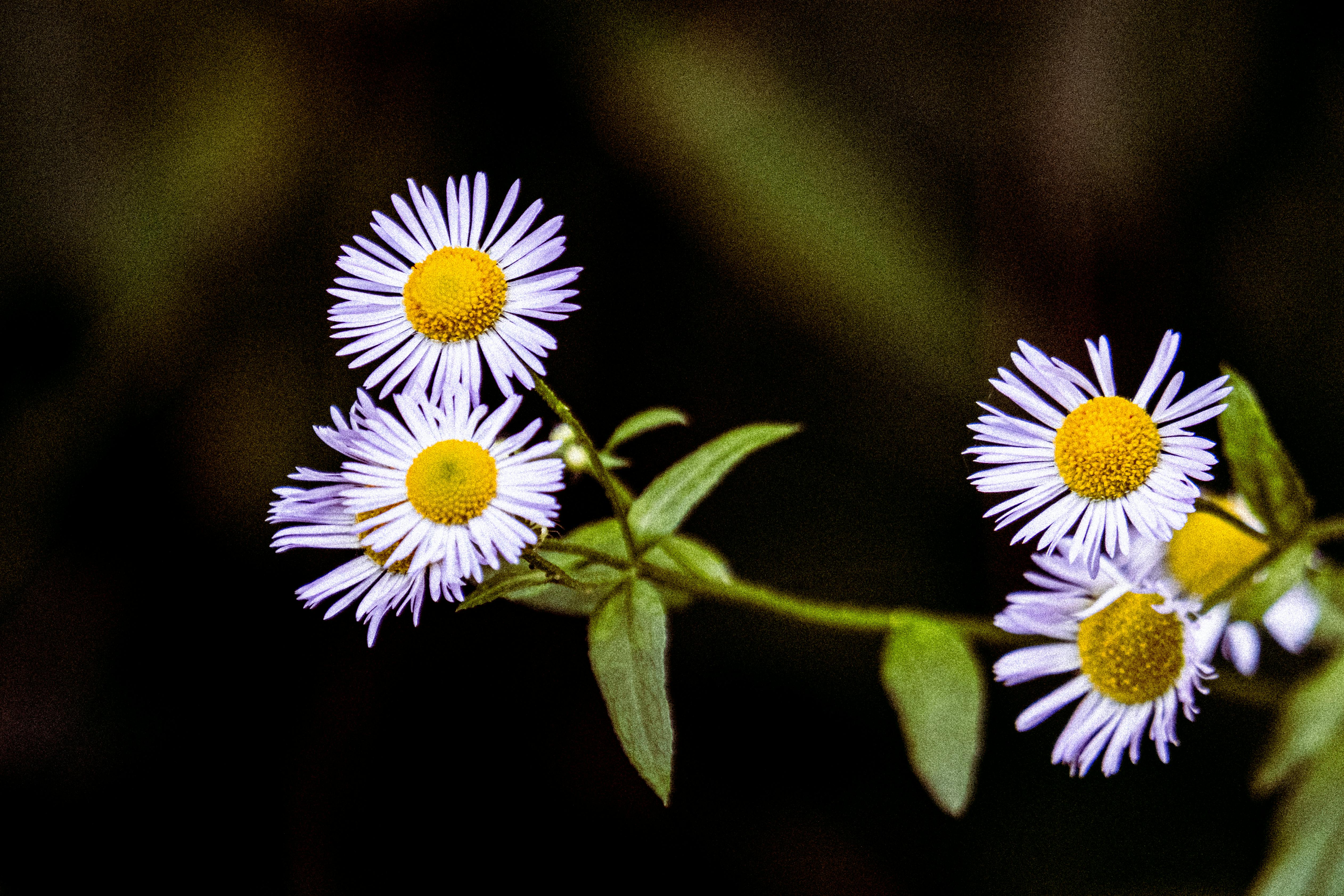
Fertilizing for Abundant Blooms
To encourage lush growth and prolific blooming, fertilize your Swan River daisies regularly. A balanced, slow-release fertilizer applied every 4 to 6 weeks during the growing season will provide the nutrients they need.
Alternatively, you can use a liquid fertilizer every two weeks, especially if you’re growing them in containers. Choose a fertilizer that’s high in phosphorus, as this nutrient promotes flower production. Avoid excessive nitrogen, which can lead to lush foliage at the expense of blooms.
If you prefer organic options, compost or well-rotted manure can be worked into the soil before planting. Additionally, fish emulsion or seaweed extract can be applied as a liquid feed throughout the growing season.
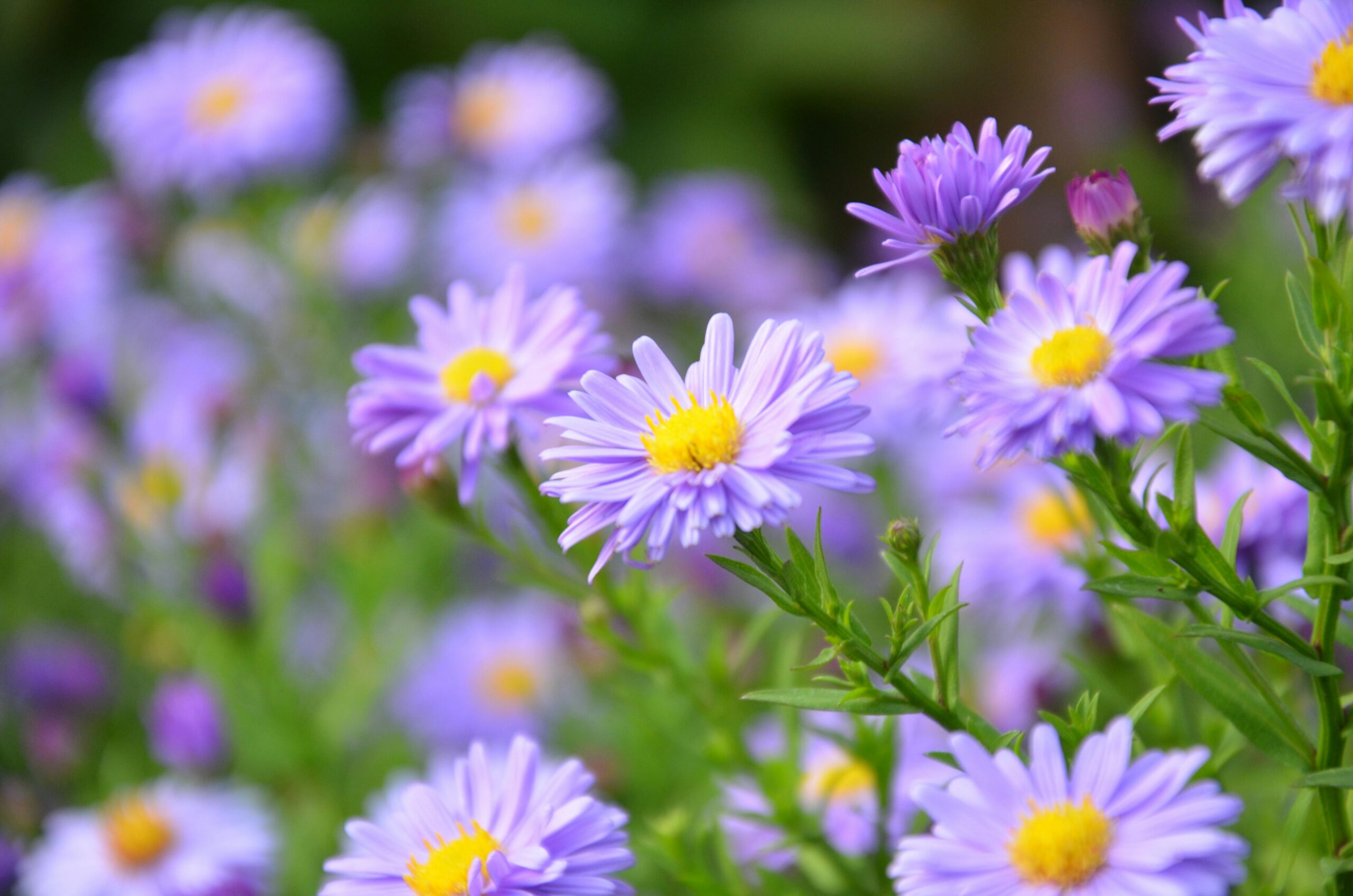
Pruning and Deadheading to Extend Bloom Time
Pruning and deadheading are essential practices for maintaining the health and appearance of your Swan River daisies. Regularly removing spent flowers encourages the plant to produce more blooms and prevents it from going to seed prematurely.
To deadhead, simply snip off the faded flowers just above a set of healthy leaves. This not only keeps the plant looking tidy but also redirects its energy toward producing new flowers.
In addition to deadheading, you can pinch back the tips of young plants to encourage bushier growth. Pruning also helps to prevent legginess, keeping the plant compact and full.
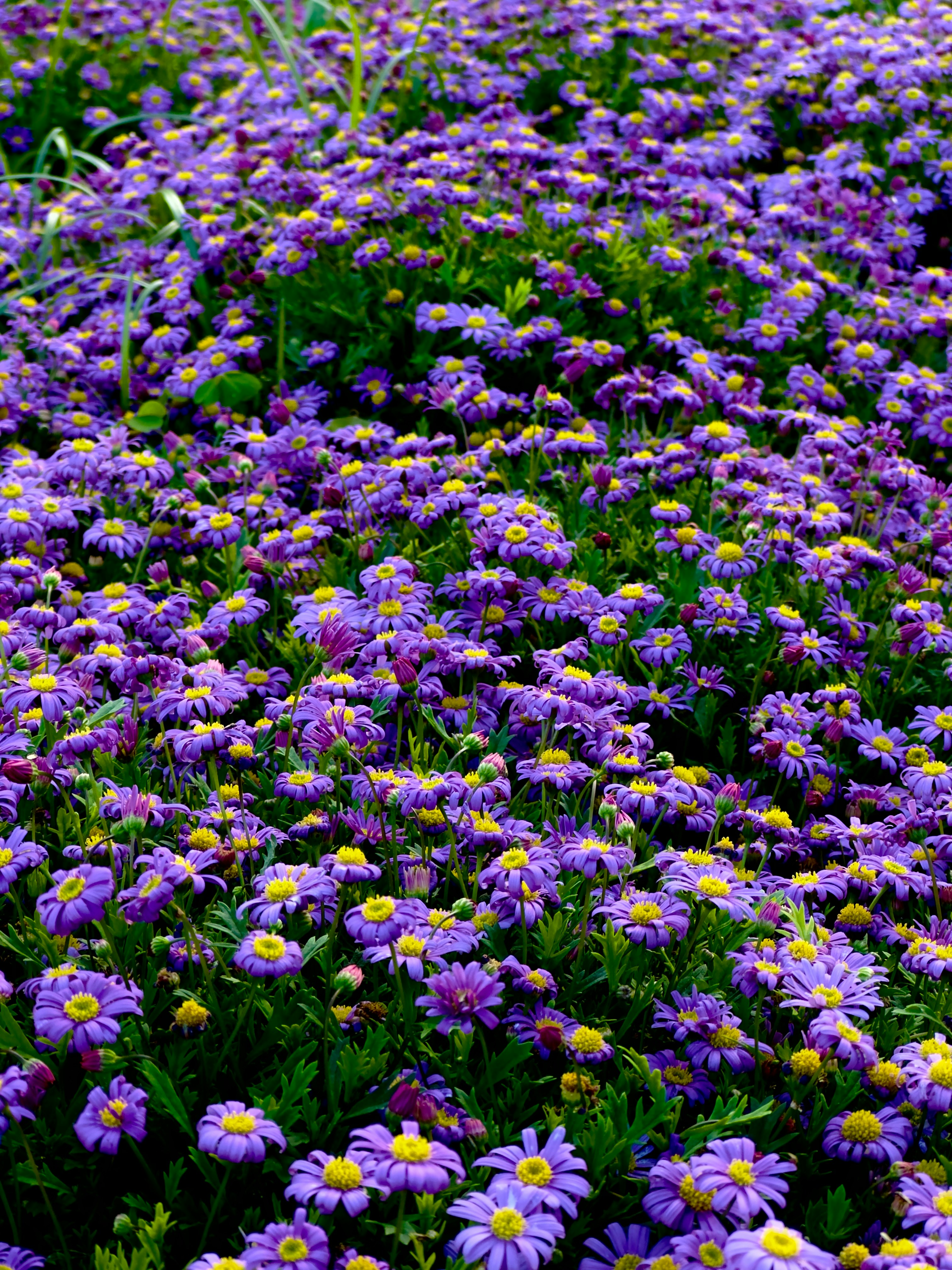
Propagating Swan River Daisies: Seeds or Cuttings?
Swan River daisies can be propagated from seeds or cuttings, making them easy to multiply and share with fellow gardeners.
- Seeds: Start seeds indoors 6 to 8 weeks before the last frost date in your area. Sow the seeds on the surface of the soil and lightly press them in. Keep the soil moist and provide bright, indirect light. Once the seedlings have developed a few sets of true leaves, they can be transplanted outdoors after the danger of frost has passed.
- Cuttings: To propagate from cuttings, take 4- to 6-inch stem cuttings from healthy plants in the spring or early summer. Remove the lower leaves and dip the cut end in rooting hormone. Plant the cuttings in a well-draining potting mix and keep them in a warm, humid environment until roots develop.

Managing Pests and Diseases
Swan River daisies are generally resistant to pests and diseases, but they can still encounter a few common issues.
- Aphids: These small, sap-sucking insects can cluster on new growth, causing distortion and yellowing of leaves. A strong spray of water can knock them off, or you can use insecticidal soap to control infestations.
- Powdery Mildew: This fungal disease appears as a white, powdery coating on leaves. It’s often caused by poor air circulation or overwatering. To prevent it, ensure your plants have enough space and avoid getting the foliage wet when watering.
- Root Rot: Overwatering or poorly draining soil can lead to root rot, which causes the roots to decay. To prevent this, ensure your soil drains well and avoid letting the plants sit in waterlogged conditions.
Regularly inspecting your plants for signs of pests and diseases can help catch problems early and keep your Swan River daisies healthy.

Overwintering Swan River Daisies
Swan River daisies are typically grown as annuals, but in mild climates (zones 9-11), they can be treated as perennials. If you live in a region with cold winters, you can either let the plants die back after the first frost or try to overwinter them indoors.
To overwinter Swan River daisies indoors, dig up the plants before the first frost and transplant them into pots. Place them in a bright, cool location, such as a sunny windowsill or greenhouse. Water sparingly during the winter months, allowing the soil to dry out between waterings.
Alternatively, you can collect seeds from your plants in the fall and store them in a cool, dry place for planting the following spring.


Companion Planting with Swan River Daisies
Swan River daisies make excellent companions for a variety of other garden plants. Their low-growing, mounding habit makes them ideal for the front of borders or as edging plants.
They pair well with other sun-loving annuals and perennials, such as marigolds, zinnias, and cosmos. The bright colors of Swan River daisies also complement the silvery foliage of dusty miller or the bold texture of ornamental grasses.
When planning your garden, consider planting Swan River daisies alongside plants with similar water and soil requirements. This will help ensure all your plants thrive in their shared environment.
Frequently Asked Questions About Swan River Daisies
How long do Swan River daisies bloom?
Swan River daisies, also known as Brachyscome, typically bloom from late spring through early fall, offering a long-lasting display of color in your garden. The blooming period generally spans about 3 to 4 months, depending on growing conditions. To extend the flowering season, regular deadheading is recommended. This practice involves removing spent flowers to encourage the plant to produce more blooms. Swan River daisies thrive in well-drained soil and full sun, which contributes to their vibrant and extended blooming. Adequate watering and occasional fertilization also support prolonged flowering.
Can I grow Swan River daisies in containers?
Yes, you can successfully grow Swan River daisies in containers. These charming flowers are well-suited for container gardening due to their compact size and adaptable nature. To ensure healthy growth, choose a container with good drainage holes and fill it with a high-quality, well-draining potting mix. Position the container in a location that receives full sun to partial shade, as Swan River daisies thrive in bright light. Regular watering is essential, but avoid waterlogged soil, as it can lead to root rot. Fertilize the plants every few weeks with a balanced, water-soluble fertilizer to support robust blooming. Additionally, deadhead spent flowers to encourage continuous blooming.
Do Swan River daisies attract pollinators?
Yes, Swan River daisies attract pollinators, making them a valuable addition to any garden. Their bright, cheerful blooms are especially appealing to bees, butterflies, and other beneficial insects. These pollinators are drawn to the daisy’s vibrant colors and nectar-rich flowers, which help support local ecosystems and enhance garden biodiversity. By including Swan River daisies in your garden, you not only add a splash of color but also contribute to a healthier environment. To maximize their appeal to pollinators, plant Swan River daisies in sunny spots and avoid using pesticides, which can deter beneficial insects. Regular deadheading and proper care will keep the plants blooming and continue to attract these essential garden visitors throughout the growing season.
Do deer eat Swan River Daisy?
Deer typically avoid eating Swan River daisies (Brachyscome iberidifolia), making them a great choice for gardeners dealing with frequent deer visits. These plants are part of the Asteraceae family and produce small, daisy-like flowers that come in shades of blue, purple, pink, and white. While deer tend to avoid them due to their taste and texture, it’s important to remember that no plant is entirely deer-proof. In times of scarcity, deer might nibble on plants they usually avoid. However, Swan River daisies are generally considered deer-resistant.
To further protect your garden, you can plant Swan River daisies alongside other deer-resistant plants. This will help reduce the likelihood of deer causing damage. Their low maintenance and resilience make them a popular choice for borders, containers, and mass plantings, especially in areas where deer are a concern.
Is brachyscome an annual or perennial?
Brachyscome, commonly known as Swan River daisy, can be both an annual or a short-lived perennial, depending on the climate. In warmer regions, particularly USDA hardiness zones 9-11, it may survive as a perennial, coming back year after year with its delicate, daisy-like flowers. However, in cooler climates, it is often grown as an annual because it cannot withstand frost.
This plant is prized for its vibrant blooms that come in shades of blue, purple, pink, and white. Whether you treat it as an annual or perennial, Brachyscome adds a charming, low-maintenance splash of color to gardens and containers. For perennial growth, ensuring well-draining soil and full sun exposure will help Brachyscome thrive. In annual plantings, deadheading spent flowers can encourage prolonged blooming. Regardless of how it’s grown, Brachyscome remains a favorite for its adaptability and cheerful flowers.
Is brachyscome hardy?
Brachyscome, commonly known as Swan River daisy, is not particularly hardy, especially in colder climates. This plant is more suited to warm, frost-free environments, thriving best in USDA hardiness zones 9-11. In these zones, it can be grown as a short-lived perennial, enduring mild winters. However, in areas with freezing temperatures, Brachyscome is typically grown as an annual, as it cannot survive harsh frosts.
While it may not be the hardiest plant in terms of cold tolerance, Brachyscome is relatively resilient in other conditions. It tolerates drought and poor soils, making it a low-maintenance choice for sunny gardens and containers. If you live in a colder region but still want to enjoy this plant’s delicate, daisy-like flowers, consider growing it in pots that can be brought indoors during winter. Regular deadheading will also help extend its blooming period, ensuring a vibrant display throughout the growing season.
How long do Swan River daisies bloom?
Swan River daisies, known for their vibrant, daisy-like flowers, have an extended bloom period that lasts from late spring through fall. Typically, these cheerful blooms can last anywhere from 8 to 10 weeks, depending on growing conditions. The key to maximizing their flowering period is proper care, including consistent watering, full sun exposure, and regular deadheading.
Deadheading, or removing spent flowers, encourages the plant to produce more blooms, extending the flowering season. Additionally, planting Swan River daisies in well-draining soil and ensuring they receive plenty of sunlight will keep them healthy and productive. In warm climates, with mild winters, you may even see these daisies blooming sporadically throughout the year.
Whether grown in garden beds or containers, Swan River daisies are a delightful addition that brings color to your space for an impressive portion of the growing season, making them a favorite for gardeners looking for long-lasting beauty.
Does Brachyscome like sun or shade?
Brachyscome, commonly known as Swan River daisy, thrives best in full sun, although it can tolerate partial shade. For optimal growth and blooming, it’s recommended to plant Brachyscome in a location where it receives at least 6 hours of direct sunlight each day. Full sun exposure helps the plant produce more vibrant and abundant flowers.
While Brachyscome can adapt to partial shade, too much shade may result in fewer blooms and a leggier appearance. In regions with intense afternoon sun, providing some shade during the hottest part of the day can help protect the plant from stress.
When choosing a spot for your Brachyscome, consider a sunny garden bed, patio, or container. The combination of well-draining soil, adequate sunlight, and regular watering will keep your Brachyscome flourishing and filled with cheerful blooms throughout the growing season.
Should you deadhead brachyscome?
Yes, deadheading Brachyscome, also known as Swan River daisy, is beneficial for maintaining its appearance and encouraging prolonged blooming. Deadheading involves removing spent or faded flowers from the plant. By doing so, you help redirect the plant’s energy from seed production to generating new blooms, resulting in a more vibrant and longer-lasting display of flowers.
To deadhead Brachyscome, simply pinch or snip off the spent flowers just above the next set of healthy leaves or buds. This practice not only keeps the plant looking tidy but also promotes continuous flowering throughout the growing season.
Regular deadheading can also prevent the plant from becoming too leggy, maintaining a more compact and bushy form. While Brachyscome is relatively low-maintenance, incorporating deadheading into your routine will enhance its overall health and flowering potential, keeping your garden or containers looking their best.
What zone is Swan River Daisy in?
Swan River Daisy (Brachyscome iberidifolia) thrives in USDA hardiness zones 9 to 11. These zones are characterized by mild winters and warm summers, providing the ideal conditions for this Australian native. In these regions, Swan River Daisy can be grown as a perennial, coming back year after year with proper care. However, in cooler zones, it is typically grown as an annual since it cannot survive freezing temperatures.
If you live in a region outside of zones 9 to 11, you can still enjoy Swan River Daisy by planting it as an annual or growing it in containers. This allows you to bring the plants indoors during the colder months. For optimal growth, ensure your Swan River Daisy receives full sun to partial shade, and plant it in well-draining soil. This hardy plant is also drought-tolerant, making it an excellent choice for gardens in warmer climates.
Does Brachyscome spread?
Yes, Brachyscome, commonly known as Swan River Daisy, does spread but in a controlled manner. This plant grows in a low, mounding form, and while it spreads, it doesn’t aggressively take over garden spaces. The delicate, fern-like foliage creates a dense mat that can fill in gaps between other plants, making it an excellent ground cover option for garden borders or containers.
Brachyscome spreads through its stems, which can root at the nodes when they touch the soil, gradually expanding its coverage area. However, the spread is moderate, so it’s easy to manage and won’t overwhelm your garden. With proper care, including regular watering and occasional trimming, you can encourage healthy growth and spread. The plant’s attractive daisy-like flowers add beauty to your garden throughout the growing season, making Brachyscome a delightful addition to any garden design. For best results, plant in well-draining soil and full sun to partial shade.
How tall do Brachyscome daisies get?
Brachyscome daisies, also known as Swan River Daisies, are compact and low-growing plants. They typically reach a height of 6 to 12 inches (15 to 30 cm), making them perfect for borders, containers, and small garden spaces. Despite their petite size, these daisies are known for their prolific blooming and vibrant colors, which can brighten up any garden.
Their short stature also makes them an excellent choice for ground cover, as they spread to create a dense mat of foliage and flowers. The plant’s fern-like leaves add texture, while the daisy-like blooms add a pop of color throughout the growing season. Brachyscome’s modest height also means they don’t overshadow other plants, making them ideal companions in mixed plantings.
Can you split Brachyscome?
To keep daisies blooming all summer, consistent care and timely maintenance are essential. Start by ensuring they are planted in a location with full sun exposure, as daisies need at least 6 hours of sunlight daily to thrive. Regular watering is crucial, especially during dry spells, but avoid waterlogging the soil, which can lead to root rot.
Deadheading, or removing spent flowers, is vital to encourage continuous blooming. By cutting off the faded blooms, the plant redirects its energy into producing more flowers instead of seeds. This simple practice can significantly extend the blooming period.
Fertilizing your daisies with a balanced, slow-release fertilizer every 4-6 weeks can also promote vigorous growth and abundant blooms. Additionally, mulching around the plants helps retain moisture and suppress weeds, creating an ideal growing environment.
Lastly, regular pruning of leggy stems keeps the plant compact and encourages bushier growth, resulting in more flowers throughout the summer.
How do you plant Swan River Daisy?
Planting Swan River Daisy (Brachyscome) is straightforward and rewarding. Start by choosing a location with full sun to partial shade. These plants thrive in well-draining soil, so ensure the planting area has good drainage. Begin by preparing the soil, incorporating compost to enhance fertility and drainage.
Sow Swan River Daisy seeds directly into the soil or start them indoors 6-8 weeks before the last frost. If sowing directly, scatter the seeds on the soil surface and lightly press them in. Cover with a thin layer of soil or mulch. Space plants about 12-15 inches apart to allow for their spreading habit.
Water the seeds gently to keep the soil moist but not soggy. Once seedlings emerge, thin them to the recommended spacing to prevent overcrowding. Regular watering and occasional feeding with a balanced fertilizer will help them establish and bloom beautifully.
How do you take care of Brachyscome?
Taking care of Brachyscome, or Swan River Daisy, is simple and rewarding. First, choose a sunny to partially shaded location with well-draining soil. Brachyscome thrives in a variety of soil types but prefers a pH ranging from 6.0 to 7.0. Water the plant regularly, ensuring the soil remains moist but not waterlogged; overwatering can lead to root rot.
Fertilize with a balanced, all-purpose fertilizer once a month during the growing season to promote lush growth and abundant blooms. Deadhead spent flowers regularly to encourage continuous blooming and prevent self-seeding. Prune back any leggy or overgrown stems to maintain a compact and attractive shape.
Pest control is minimal, but watch for common issues like aphids or spider mites. In cooler climates, consider mulching around the base to protect the roots from frost. With these simple care tips, your Brachyscome will thrive and brighten up your garden beautifully.
What happens if you don’t deadhead daisies?
If you don’t deadhead daisies, their blooming cycle may be negatively affected. Deadheading, or removing spent flowers, prevents the plant from focusing its energy on seed production. Without this practice, daisies will prioritize seed development over new flower growth, leading to fewer blooms and a less vibrant display. Additionally, old, wilted flowers can attract pests and diseases, potentially impacting the plant’s overall health.
By regularly deadheading, you encourage the plant to produce new buds and extend the flowering period, ensuring a more prolific and continuous display of blooms throughout the growing season. For best results, remove faded flowers at the base of the stem where they connect to the plant, promoting new growth and maintaining a tidy appearance. This simple maintenance step helps keep your daisies looking fresh and thriving all season long.
Is brachyscome safe for dogs?
Yes, Brachyscome, commonly known as Swan River Daisy, is generally considered safe for dogs. This plant is non-toxic and does not pose significant health risks if ingested by pets. However, while Brachyscome is not harmful, it’s always a good idea to monitor your dog’s behavior around plants. Ingesting large quantities of any plant material could potentially lead to mild gastrointestinal upset, such as vomiting or diarrhea. To ensure your pet’s safety, try to discourage them from chewing on or consuming garden plants. If you notice any unusual symptoms after your dog interacts with a Brachyscome plant, consult your veterinarian for advice. Maintaining a pet-friendly garden by choosing non-toxic plants and monitoring your pet’s behavior can help prevent any potential issues and ensure a safe environment for both your plants and furry friends.
Is brachyscome safe for cats?
Yes, Brachyscome, commonly known as Swan River Daisy, is generally considered safe for cats. This plant is non-toxic to felines, meaning it does not pose significant health risks if ingested. However, even though Brachyscome is not harmful, it’s still a good practice to monitor your cat’s behavior around plants. Consuming large amounts of any plant material could potentially cause minor gastrointestinal issues, such as vomiting or diarrhea. To ensure your cat’s well-being, try to discourage them from chewing on or eating garden plants. If you observe any unusual symptoms or health concerns after your cat interacts with Brachyscome, it’s best to consult your veterinarian for guidance. Maintaining a pet-friendly garden by opting for non-toxic plants and keeping an eye on your pet’s interactions with plants can help prevent potential issues and keep your feline friends safe and healthy.
What colors are Swan River daisies?
Swan River Daisies, or Brachyscome, come in a delightful array of colors, primarily featuring shades of purple, pink, and white. These vibrant blooms can brighten up any garden with their cheerful and diverse color palette. The most common colors are lavender and soft pink, which add a gentle touch to garden beds and containers. Additionally, some varieties offer a mix of these hues, creating a beautiful, multicolored effect. While the classic white and pastel tones are popular, there are also deeper purples and bolder pinks available, offering options to suit different garden aesthetics. This variety not only enhances visual appeal but also provides versatility for creating stunning floral arrangements.
Can you take cuttings from Brachyscome?
Yes, you can successfully take cuttings from Brachyscome, also known as Swan River Daisies. To propagate these plants, start by selecting healthy, non-flowering stems from the parent plant. Ideally, these should be about 4 to 6 inches long and taken from the tips of the stems. Remove any lower leaves, leaving only a few at the top. Dip the cut end in rooting hormone to encourage faster development of roots. Plant the cuttings in a well-draining potting mix, such as a blend of peat and perlite, to prevent rot. Keep the cuttings in a warm, bright location with indirect sunlight and maintain consistent moisture without overwatering. Covering the cuttings with a plastic dome or bag can help retain humidity and promote rooting. After a few weeks, once the roots have established, transplant the new Brachyscome plants into their permanent pots or garden beds. This method ensures healthy, vigorous new plants.
How much room do daisies need to grow?
Daisies require ample space to thrive and grow robustly. Typically, you should space them about 12 to 18 inches apart to allow for their full mature size and to ensure good air circulation. This spacing helps prevent overcrowding, which can lead to diseases and stunted growth. For larger varieties, you might need to increase the distance to 18 to 24 inches. Proper spacing allows each plant to access sufficient sunlight and nutrients from the soil, contributing to vibrant blooms and overall plant health. Additionally, giving daisies enough room minimizes competition for resources and helps in easy maintenance, including weeding and deadheading. By providing adequate space, you ensure that your daisy plants have the best conditions to flourish, producing a beautiful and healthy display of flowers.
Swan River daisies are a joy to grow, with their cheerful blooms and easy-care nature. Whether you plant them in your garden beds, borders, or containers, they’re sure to bring a burst of color and charm to your outdoor space. By following these tips for growing and caring for Swan River daisies, you’ll enjoy a vibrant display of flowers all season long. So why not add these lovely plants to your garden and watch them flourish?


